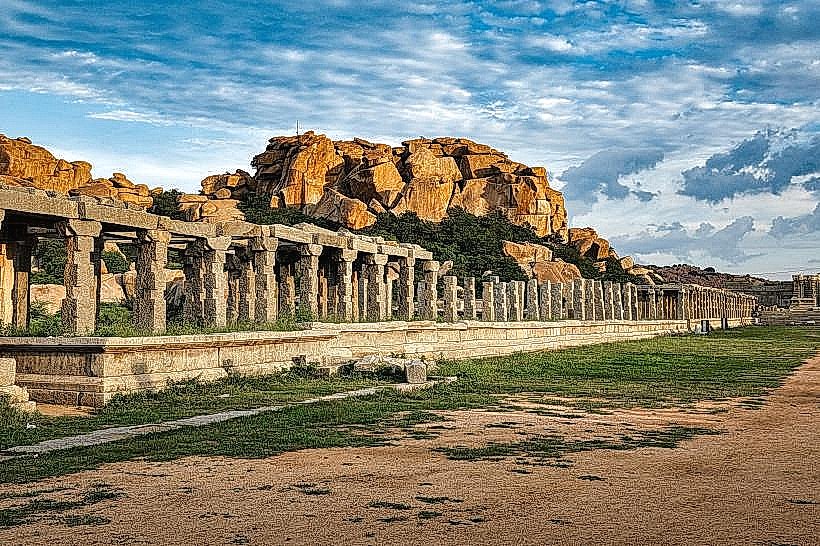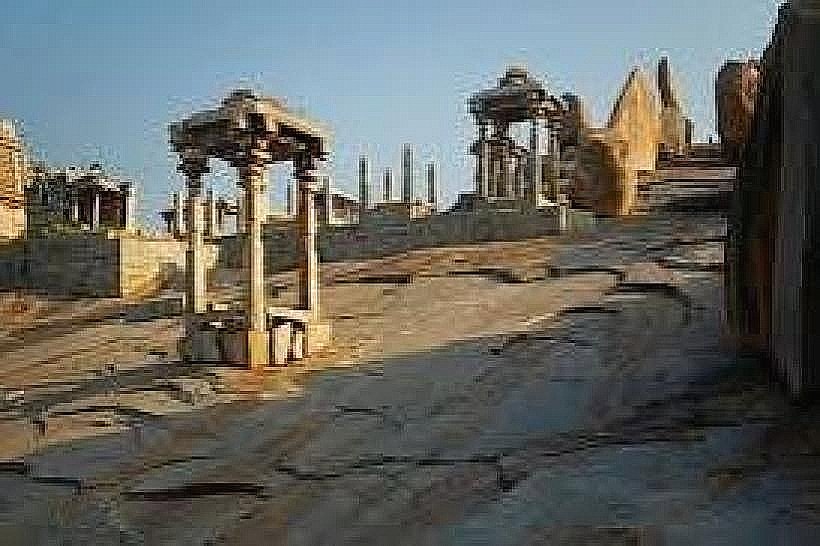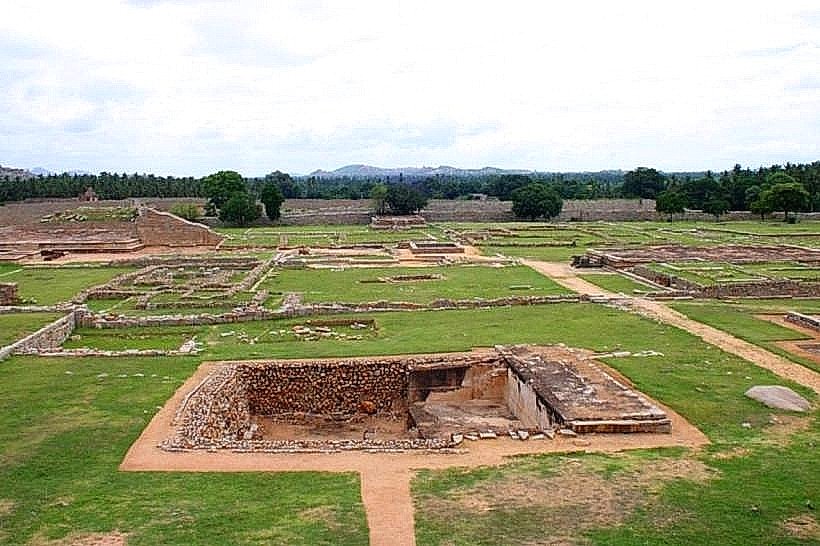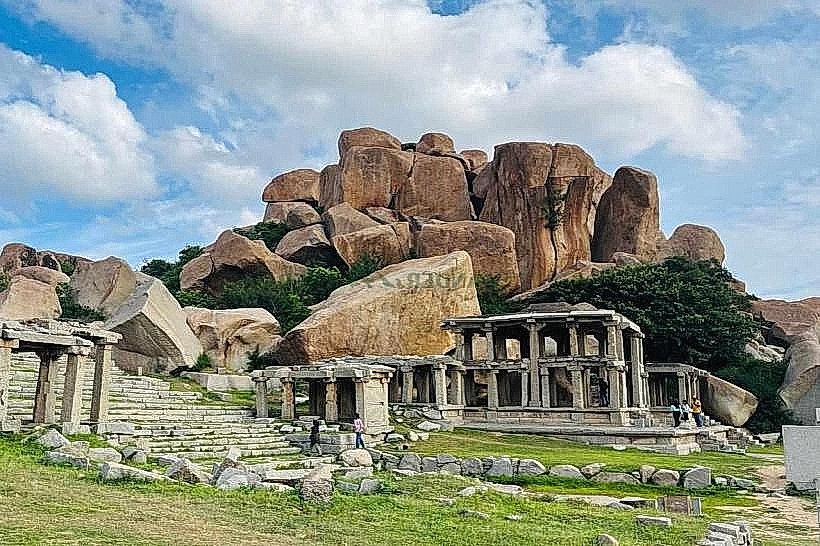Information
Landmark: Vijaya Vittala TempleCity: Hampi
Country: India
Continent: Asia
Vijaya Vittala Temple, Hampi, India, Asia
Overview
Oddly enough, The Vijaya Vittala Temple in Hampi, Karnataka, stands as one of the most breathtaking and finely crafted monuments of the Vijayanagara Empire (14th–16th century CE), its stone chariot gleaming under the southern sun as proof of that era’s artistic and engineering genius, in turn dedicated to Lord Vittala, a form of Vishnu, the temple draws visitors with its finely carved pillars that seem to sing when struck and its grand stone chariot gleaming in the sun-a true jewel of Hampi’s UNESCO World Heritage Site.The temple complex stretches wide, its granite halls, courtyards, and shrines-each carved from locally quarried stone-linked like open mandapas under the sun, likewise the main architectural highlight is the Garbhagriha, or sanctum, where Lord Vittala’s idol rests; its dim stone chamber still bears the scars of plunder from the empire’s final days.Ranga Mandapa (Assembly Hall): A spacious hall lined with carved stone pillars, their smooth surfaces catching the light, built for lively gatherings and solemn ceremonies, as well as mantapa of Musical Pillars: The temple’s most celebrated hall holds 56 exquisitely carved pillars that each ring out their own clear note when tapped, a living echo of the Vijayanagara artisans’ brilliance with stone and sound.Outer Courtyards: wide open areas dotted with shrines, gateways, and carved stone figures, where visitors can trek in reverence or join the measured, steady rhythm of a procession, alternatively the layout blends Dravidian architectural ideals with Vijayanagara flair, showcasing majestic symmetry and a design that seems to rise naturally from the rocky, sun-warmed landscape.The stone chariot, a defining symbol of the Vijaya Vittala Temple, stands in the courtyard-an intricate granite replica of the temple chariots once pulled through festival streets, as well as it features finely carved wheels, sturdy pillars, and ornate motifs that show the empire’s sculptural skill-each curve as crisp as a chisel’s edge.Fixed in spot, the chariot still seems to breathe with ritual motion and devotion, linking carved stone to the pulse of spiritual practice, at the same time the temple brims with sculptural beauty, its walls alive with carvings of gods, dancers, musicians, animals, and vivid scenes from ancient epics.You’ll notice the pillars and walls alive with carved garudas and celestial beings, their wings and robes etched in stone, furthermore carved friezes show musicians tuning their lutes, dancers mid-twirl, and lively courtly scenes that capture the Vijayanagara love of art and celebration.Geometric patterns mingle with delicate floral motifs, creating a lively rhythm that pulls the eye across the walls and ties the architecture together, equally important at the Vijaya Vittala Temple, visitors step into a world where art, history, and sound meet; as they wander through pillared halls warm with ancient stone, many pause to tap the carved columns, coaxing delicate, musical notes from the rock itself.As far as I can tell, The stone chariot stands out as a stunning spot for photos, its carved wheels gleaming softly against Hampi’s rugged hills, consequently wandering through the courtyards and tiny shrines offers a glimpse of the daily prayers, incense smoke, and quiet routines that shaped religious life in the Vijayanagara era.With its open-air design, sunlight drifts in and shifts through the space, bringing the carvings to life as their texture and depth change from dawn to dusk, at the same time the Vijaya Vittala Temple stands as the pinnacle of Vijayanagara artistry and design, its carved stone pillars echoing the rhythm of an age rich in history and culture.It shows how people honor Vishnu with deep devotion, drums echoing through vast temples during grand ceremonies, also engineering thrives on innovation, especially in the musical pillars and the structure that holds them-metal ringing faintly as it’s shaped.Art, music, and architecture came together, echoing the empire’s vibrant culture like sunlight glinting off painted tiles, and though weathered by centuries of decay, the temple still stuns visitors-its towering stone columns, intricate carvings that catch the afternoon light, and bold design reveal why it remains vital to grasping South India’s medieval heritage, generally For visitors, the Vijaya Vittala Temple dazzles the eyes, echoes with music carved in stone, and carries the deep heartbeat of history-an enduring testament to the ingenuity and devotion of the Vijayanagara Empire.
Author: Tourist Landmarks
Date: 2025-11-19









